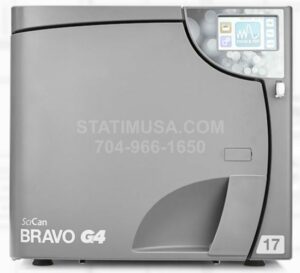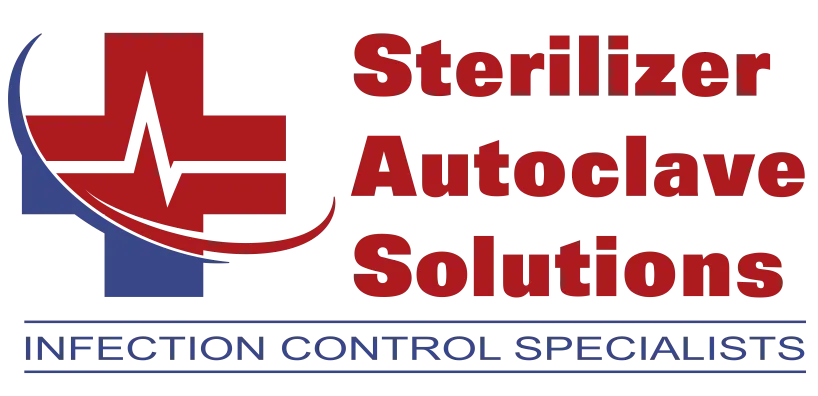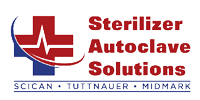This or That: Open Door and Closed Door Drying
Autoclaves are vary by a wide variety of factors. From designs to features, even the most similar units have a key difference that can influence your decisions when you go to buy one for your practice. Here at Sterilizer Autoclave Solutions, we do our best to try and show you what these differences are and why they matter. So in this article we’d like to focus on one of the more important things to look for when it comes to autoclave: how they dry.
When the cycle is complete, the autoclave will have its own way to dry the load and ensure it’s ready for the next stage. Usually the types of drying system an autoclave can have boils down to open door and closed door drying. Understanding the drying process in autoclaves is crucial for ensuring effective sterilization. So we’ll go over each one, and give you an example of a popular autoclave for each.
Open-Door Drying
Open Door Drying is the process of venting the autoclave for the load to dry once a cycle is complete. By keeping the door open, the moisture passively evaporates from the chamber into the surrounding environment.
- This older, less sophisticated method involves slightly opening the autoclave door after the sterilization cycle is complete. The purpose is to allow the hot, moist air inside the chamber to escape, facilitating evaporation of any remaining moisture on the sterilized items.
- In gravity displacement autoclaves, which rely on steam displacement by gravity, this method was commonly used. The residual heat within the chamber walls contributes to the evaporation process. However, this method is less efficient and can be prone to contamination.
- A key concern with open-door drying is the risk of airborne microorganisms contaminating the sterilized items before they are fully dry. This is because the open door allows unfiltered room air to enter the chamber. Therefore, strict environmental controls are necessary.
- This method can be very time consuming, and does not provide as reliable of a dry load as more modern methods.
Example of an Open Door Drying Autoclave
For an example of Open Door Drying, we look to Midmark with their M9 steam sterilizer. The Midmark M9 Ultraclave is a reliable, American-made steam sterilizer designed for busy clinics. It utilizes saturated steam under pressure for effective sterilization, featuring a spacious stainless steel chamber and an intuitive interface with customizable cycles. Its Steam Flush Pressure Pulse Air Removal System ensures proper steam penetration, and the LCD display provides clear cycle status and error warnings.
steam sterilizer designed for busy clinics. It utilizes saturated steam under pressure for effective sterilization, featuring a spacious stainless steel chamber and an intuitive interface with customizable cycles. Its Steam Flush Pressure Pulse Air Removal System ensures proper steam penetration, and the LCD display provides clear cycle status and error warnings.
- Saturated steam under pressure: Exceeds standard sterilization parameters.
- 9″ x 15″ stainless steel chamber: Ample capacity for clinic needs.
- Steam Flush Pressure Pulse Air Removal System: Ensures proper steam penetration.
- Four pre-set sterilization cycles: Unwrapped, pouches, packs, and hand pieces.
- Customizable cycles: Allows for programming unique sterilization parameters.
- Easy water fill and drain: Convenient maintenance with a level indicator.
- Bright LCD display: Provides clear cycle status and error messages.
- Automatic interruption warning: Alerts operators to non-sterile items.
- American made: Manufactured in Versailles, OH, USA.
The Midmark M9 is available on our website for purchase here.
Closed-Door Drying
Closed door drying on an autoclave refers to a feature where the sterilization chamber door remains closed throughout the entire drying cycle after the sterilization process. This allows the items inside to dry completely without opening the door, which can save time and help maintain sterility by preventing potential contamination from outside air.
- Modern autoclaves, especially those with dynamic-air removal systems (such as vacuum autoclaves), utilize closed-door drying. This method is far more efficient and reliable.
- These autoclaves often incorporate features like vacuum pumps and heated chamber walls to actively remove moisture. Vacuum pumps lower the pressure within the chamber, reducing the boiling point of water and accelerating evaporation. Heated chamber walls further enhance the drying process.
- Closed-door drying minimizes the risk of contamination because the chamber remains sealed during the drying phase. Some autoclaves also use HEPA-filtered air during the drying cycle, providing an extra layer of protection.
- This method is much faster, and provides a much more reliable dry load. This is especially important for wrapped instruments, and porous loads.
- Many modern autoclaves have pre programmed drying cycles, that ensure a proper dry load.
Example of a Closed Door Drying Autoclave
If it’s closed-door drying you’re after, we can point you towards one of SciCan’s best, the Bravo G4. The Bravo G4 in SciCan’s line of incredible G4 equipped autoclaves. This Class B sterilizer incorporates both pre-sterilization vacuum to improve steam penetration and post-sterilization vacuum to improve drying. The autoclave’s 22L chamber capacity, vacuum-assisted closed door drying and efficient turnover times ensure clinicians always have an ample supply of instruments ready for use. Bringing in quality-of-life improvements that maybe you didn’t think you needed.
equipped autoclaves. This Class B sterilizer incorporates both pre-sterilization vacuum to improve steam penetration and post-sterilization vacuum to improve drying. The autoclave’s 22L chamber capacity, vacuum-assisted closed door drying and efficient turnover times ensure clinicians always have an ample supply of instruments ready for use. Bringing in quality-of-life improvements that maybe you didn’t think you needed.
- A sleek, modern exterior bringing quality of life improvements to the build.
- The intuitive touchscreen interface using the easy-to-navigate G4 interface.
- Reliability
- The SciCan Bravo G4 units utilize the pre/post vacuum cycle of Class B.
- Fast unwrapped cycle times as fast as 33 minutes.
- The upgrade to G4 technology means this machine takes advantage of many useful features for things like data, profiles, Wi-Fi coverage and more.
- These units feature a new “Delayed Start” feature, able to schedule a cycle whenever you need. Even overnight!
The SciCan Bravo G4 is available on our website for purchase here.
Final Thoughts
The drying method employed by an autoclave is a critical factor in ensuring both the efficiency and reliability of the sterilization process. As we’ve explored, the transition from older, open-door drying techniques to modern, closed-door systems reflects significant advancements in technology, prioritizing speed, sterility, and user convenience. Whether you’re considering a basic laboratory unit or a high-performance medical sterilizer, understanding the nuances of drying cycles is essential for making an informed decision.
At Sterilizer Autoclave Solutions, we aim to show you these differences, empowering you to select the autoclave that best suits your practice’s specific needs and ensures the highest standards of instrument preparation. If you have any questions about either of these autoclaves, or any and all things infection control, please give us a call at 704-966-1650 Option 3 for our Free Tech Support Line. We also have our various programs that are available to anyone, anytime for free using the links below.
As always if you have any questions about this process or anything else please feel free to contact us and take advantage of our “FREE TECH SUPPORT.”
We also offer FREE VIRTUAL TECH SUPPORT to “See and Talk” with a “Real Time Live Technician” for any problems you may be in need of help with.
You can also use our “FREE MAINTENANCE PROGRAM”. Take the guesswork and worrying about what unit is due for maintenance and which maintenance cycle it is time for. We will keep track of all your autoclaves and let you know when it’s time for anything.


